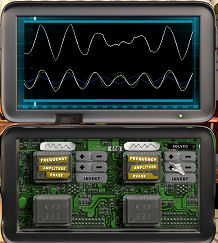Pacific Northwest heat wave temperatures reach all-time high
The Ultimate Guide To The WAVE Foundation at the Newport Aquarium
Pulsar signals are highly routine and foreseeable. But "if a GW passes between the pulsar and the Earth", states Nano, Grav employee Stephen Taylor of Vanderbilt University in Tennessee, "it warps the stepping in spacetime", causing the pulse to get here sooner or later on than expected. The Green Bank Telescope (GBT) at the National Radio Astronomy Observatory in Virginia, part of the Nano, Grav task.
As Nano, Grav group member Julie Comerford of the University of Colorado at Stone says, this gives the "detector" arms as long as the range in between the Earth and the pulsars: maybe thousands of light years. Because of Find More Details On This Page , the signals noticeable by Nano, Grav have long wavelengths and very low frequencies, beyond even the reach of Lisa and made by colossal supermassive black holes billions of times as massive as the sun, which combine as entire galaxies collide.
Unthinkably cataclysmic though they are, such mergers are really rather common, and Nano, Grav would see a kind of hubbub made by lots of them. "All over the universe, there are sets of supermassive black holes orbiting around each other and producing GWs," says Comerford. "These ripples produce a sea of GWs that we are bobbing in."In January, a Nano, Grav team led by Comerford's postdoctoral researcher Joseph Simon in Colorado reported a possible first detection of this GW background.

The smart Trick of Pacific Northwest Heat Wave Is Buckling Roads And Melting That Nobody is Talking About
If Nano, Grav uses, in effect, a GW detector light years in size, physicist Sougato Bose of University College London thinks we might make one small sufficient to fit inside a cupboard. His concept relies on among the oddest effects in quantum theory, which usually describes really small objects like atoms.
UNDER MAINTENANCE